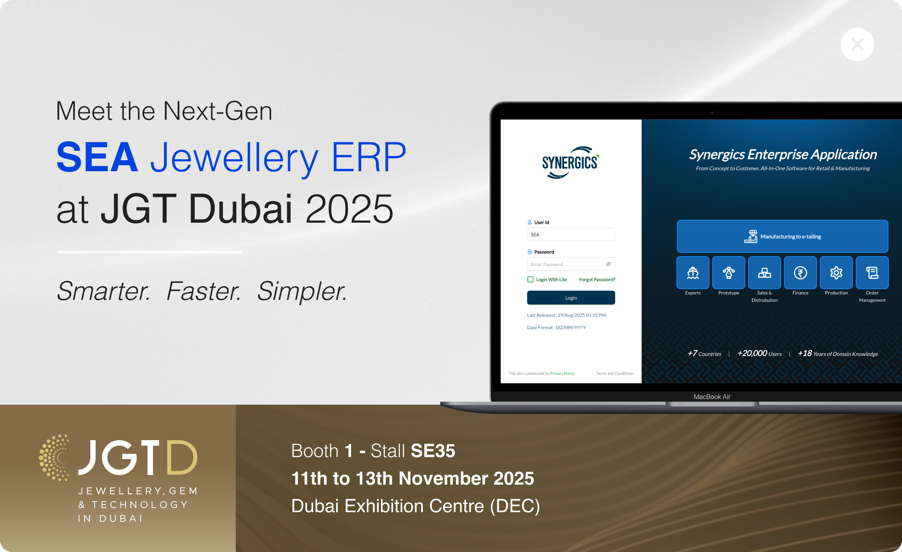The jewellery industry operates with unique challenges that require specialized business management solutions. From tracking precious metals and gemstones to managing complex manufacturing processes, jewellery businesses need robust systems that can handle intricate operations while maintaining accurate financial records. This is where ERP accounting integration becomes crucial for modern jewellery enterprises.
Understanding the Need for Integration in Jewellery Businesses
Jewellery businesses deal with high-value inventory, complex manufacturing processes, and detailed customer requirements. Traditional standalone systems often create data silos, leading to inefficiencies, errors, and missed opportunities. By integrating Enterprise Resource Planning (ERP) systems with accounting software, jewellery businesses can achieve seamless operations and real-time financial visibility.
The integration becomes particularly important when dealing with Bills of Materials (BOM). For jewellery manufacturers, understanding the BOM full form – Bill of Materials – is essential as it details every component, raw material, and process required to create a finished piece. When your ERP system is properly integrated with accounting software, BOM data flows seamlessly into financial calculations, ensuring accurate costing and profitability analysis.

Benefits of ERP Accounting Integration for Jewellery Businesses
1. Real-Time Financial Visibility
Integration provides instant access to financial data across all business operations. Whether you’re tracking the cost of gold used in production or monitoring retail sales, integrated systems ensure that accounting records are updated in real-time.
2. Accurate Inventory Valuation
Jewellery inventory involves precious metals and stones with fluctuating values. Integrated systems automatically update inventory valuations based on current market prices, ensuring accurate financial reporting.
3. Streamlined Manufacturing Accounting
From raw material procurement to finished goods, integrated systems track all manufacturing costs automatically. This is particularly valuable for custom jewellery orders where accurate job costing is essential.
4. Enhanced Compliance and Reporting
Automated data flow between ERP and accounting systems ensures compliance with industry regulations and simplifies tax reporting, audit trails, and financial statement preparation.
Tally Integration for Jewellery Businesses
Tally integration jewellery solutions have gained significant popularity due to Tally’s robust accounting capabilities and widespread adoption in India. Tally’s features align well with jewellery business requirements, offering specialized modules for precious metal accounting, GST compliance, and detailed financial reporting.
When integrated with a comprehensive jewellery software solution, Tally can handle complex scenarios such as:
- Metal purity calculations and automatic weight conversions
- Making charges and labor cost allocation
- Consignment tracking for both inward and outward transactions
- Customer advance management and order tracking
- Multi-location inventory synchronization
Key Features to Look for in Integrated Solutions
Manufacturing Integration
A robust jewellery retail software should seamlessly connect manufacturing processes with accounting. This includes automatic posting of material consumption, labor costs, and overhead allocation from production orders directly to accounting ledgers.
Inventory Management
Effective jewelry inventory software integration ensures that all inventory movements, from raw materials to finished goods, are automatically reflected in accounting records. This eliminates manual data entry and reduces errors.
Customer Management
Integration should extend to customer relationship management, ensuring that sales orders, advance payments, and delivery information flow seamlessly between CRM and accounting modules.

Implementation Best Practices
1. Data Mapping and Standardization
Before integration, establish clear data mapping between ERP and accounting systems. Standardize chart of accounts, inventory codes, and customer information to ensure smooth data flow.
2. Phased Implementation
Start with core modules like inventory and basic accounting, then gradually add manufacturing, CRM, and advanced reporting features. This approach minimizes disruption and allows for better user adoption.
3. Training and Change Management
Invest in comprehensive user training programs. The success of ERP accounting integration largely depends on user acceptance and proper utilization of integrated features.
4. Regular Reconciliation and Monitoring
Establish regular reconciliation processes to ensure data consistency between integrated systems. Monitor key performance indicators to measure the success of integration efforts.
Advanced Integration Features
Modern jewellery ERP solutions offer advanced integration capabilities that go beyond basic data sharing:
Real-time Dashboard Integration: Combined dashboards showing both operational and financial metrics provide comprehensive business insights at a glance.
Automated Journal Entries: The system automatically creates accounting entries for manufacturing transactions, sales, purchases, and inventory adjustments.
Multi-Currency Support: For businesses dealing with international suppliers or customers, integrated systems handle multiple currencies and automatic exchange rate updates.
Bank Integration: Direct integration with banking systems enables automatic bank reconciliation and cash flow management.
Challenges and Solutions
Data Security and Backup
Integrated systems require robust security measures and regular backup procedures. Implement role-based access controls and encrypted data transmission between systems.
System Performance
Large volumes of transactional data can impact system performance. Optimize database structures and implement archiving strategies for historical data.
Customization Needs
Every jewellery business has unique requirements. Choose integration solutions that offer flexibility and customization options without compromising system stability.
ROI and Business Impact
The return on investment from ERP accounting integration in jewellery businesses typically manifests through:
- Reduced manual effort in data entry and reconciliation processes
- Improved accuracy in financial reporting and inventory valuation
- Faster decision-making through real-time business insights
- Enhanced customer service through integrated order and payment tracking
- Better compliance with regulatory requirements and audit processes
Future Trends in Jewellery ERP Integration
The future of jewellery business management lies in intelligent integration that leverages technologies like artificial intelligence, machine learning, and IoT devices. These technologies will enable predictive analytics for inventory management, automated quality control integration, and smart financial forecasting.
Cloud-based integration solutions are becoming increasingly popular, offering scalability, reduced IT overhead, and seamless remote access capabilities.
Conclusion
Integrating ERP with accounting software is no longer a luxury but a necessity for competitive jewellery businesses. The benefits of seamless data flow, real-time visibility, and automated processes far outweigh the initial investment and implementation challenges.
Whether you’re considering Tally integration for your jewellery business or exploring comprehensive ERP solutions, the key is to choose systems that understand the unique requirements of the jewellery industry. Look for solutions that offer robust manufacturing support, accurate inventory management, and flexible integration capabilities.
The success of your integration project depends on careful planning, proper implementation, and ongoing optimization. With the right approach, ERP accounting integration can transform your jewellery business operations, providing the foundation for sustained growth and profitability in an increasingly competitive market.
By embracing integrated solutions, jewellery businesses can focus on what they do best – creating beautiful pieces that delight customers – while technology handles the complex backend operations seamlessly and efficiently.











